Ten Gentlemen from West Point
Brief Synopsis
Cast & Crew
Henry Hathaway
George Montgomery
Maureen O'hara
John Sutton
Laird Cregar
John Shepperd
Film Details
Technical Specs

Synopsis
In the early 1800s, Congress debates the advisibility of re-establishing a military training academy at West Point, where officers were trained during the Revolutionary War. One of the academy's strongest supporters is flirtatious Carolyn Bainbridge, whose father also believed in West Point. Senator Henry Clay of Kentucky persuades the others to fund the academy for a year, and the first group of cadets assemble. Among them is Carolyn's aristocratic fiancé, Howard Shelton, who is attending purely for her sake, and Kentucky woodsman Joe Dawson, who is alight with patriotic ferver. The school's commander is Major Sam Carter, a life-long military man, who does not believe that a good soldier can be created in the classroom. His resentment of the academy is shared by the regular soldiers stationed there, including leader Scully, but civilian teachers Florimond Massey, Jared Danforth and Alden Brown are enthusiastic. Carolyn follows the cadets to the fort and lives in a nearby tavern, which is run by Mrs. Thompson and her servant, Benny Havens. Soon after their arrival, the cadets visit the tavern, where Joe mistakes Carolyn for a serving girl. Intrigued by Joe's masculinity and good nature, Carolyn keeps up the charade. The students begin their studies and are particularly interested in Massey's lectures on strategy, although Carter cancels the class in favor of forced marching. The cadets have several run-ins with the soldiers, including a brutal game of Indian lacrosse, and Carter continutes to drive them hard in the hope of forcing them to quit. Meanwhile, Joe learns Carolyn's true identity and that she is engaged to Howard, and believes that she was deliberately teasing him. Carolyn tries to explain her true feelings, but Joe refuses to listen. Distressed over Carter's harshness to the cadets, Carolyn writes an anonymous letter to Congress asserting that he is incompetent. Later, Carter demands that the cadets reveal the culprit and when they do not, orders them to "ride the cannon." The notorious punishment requires the men to sit astride large cannons as they are dragged by horses across rough terrain, and anyone who falls off will be dismissed from the academy. As night falls, only ten men, including Howard and Joe, are left, but they are determined to stay on the cannons until the end. Howard is shamed by Joe into taking pride in being a cadet, and the ten men endure the punishment throughout the night. In the morning, Carter receives orders to report with his men to General William Henry Harrison in the Indiana territory. Before leaving, Joe again rebuffs Carolyn's romantic overtures by saying that they are too dissimilar. As soon as the soldiers and ten cadets arrive at the fort, Harrison puts Carter in charge, as he leaves with his own men to seek out Tecumseh, their Indian opponent. Carter is then kidnapped by Tecumseh's men and taken to the Indian encampment, but the cadets determine to rescue him. Scully is reluctant to take their orders, but Joe and Howard take charge and organize the small contingent. Using strategy taught by Massey, the cadets succeed in rescuing Carter by tricking the Indians into thinking that they are surrounded. Joe is wounded in the leg, and although Carter, who has changed his mind about the cadets, later urges him to return to West Point and accept his commission, Joe refuses because he is no longer perfectly fit. Carolyn arrives at the fort and insists on marrying Joe, despite his continued objections. She stows away in his wagon as he leaves the fort, and Joe happily surrenders to his fate. Back at the academy, Carter praises all the cadets, including Howard, as they graduate and receive their certificates of proficiency.

Director

Henry Hathaway
Cast

George Montgomery

Maureen O'hara
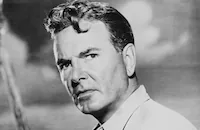
John Sutton

Laird Cregar

John Shepperd
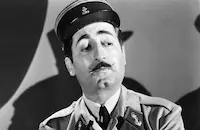
Victor Francen
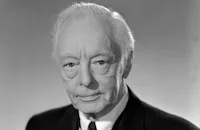
Harry Davenport

Ward Bond

Douglass Dumbrille
Ralph Byrd
Joe Brown Jr.
David Bacon
Esther Dale
Richard Derr

Louis Jean Heydt
Stanley Andrews

James Flavin
Edna Mae Jones
Charles Trowbridge

Tully Marshall
Edwin Maxwell
Uno
Edward Fielding
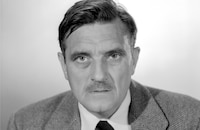
Morris Ankrum
Selmer Jackson
Noble Johnson
Eddie Dunn

Frank Ferguson
George Holmes
Dick Winslow
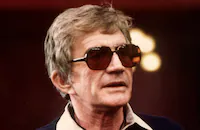
Blake Edwards
John Meredith
Anthony Marsh

Dick Hogan
Gordon Wynne
Roger Kirby
Stanley Parlan
Gene Garrick
Malcolm Mctaggart
Gene Rizzi
Herbert Patterson
Max Cole
John Whitney
John Hartley

Tom Neal
Don Peters
William Kersen
Jesse Graves
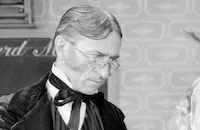
Olin Howlin
Harry Tyler
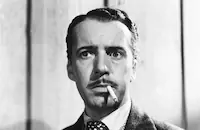
Boyd Irwin
Paul Scardon
Carl Stockdale
Davison Clark
Henry Roquemore
Harry Stubbs
Frank Shannon
John Dilson
Frank Jaquet
Paul Stanton
Emmett Smith
James Seay
Eddy Chandler
John Kelly
Ed Gargan
Warren Ashe
Crew
James B. Clark
Richard Day
Red Donohue
Philip Egner
Chester Gore
Ben Hecht
Roger Heman
Talbot Jennings
Nathan Juran
William Koenig
Thomas Little
Phyllis Loughton
Richard Maibaum
Ray Moore
Alfred Newman
Lt. O'brien
Guy Pearce
William Perlberg
George Seaton
Leon Shamroy
Abe Steinberg
Dolly Tree
Frank Tressault
Malvin Wald
E. Clayton Ward
Robert Webb
Lou Witte
Lt. Col. Charles L. Wyman
Darryl F. Zanuck

Film Details
Technical Specs

Award Nominations
Best Cinematography
Quotes
Trivia
Notes
The working titles of this film were Salute to Heroes and School for Soldiers. As depicted in the film, an important military base was constructed at West Point, NY during the Revolutionary War, and on July 4, 1802, an act of Congress formally opened the United States Military Academy at the site. Although the academy initially specialized in training military engineers, its four-year program grew to include various specialties of military science, humanities and social sciences. Many noted military leaders have graduated from the school, which first admitted women cadets in 1976.
The following information comes from Hollywood Reporter news items and studio press releases: Lou Edelman was originally assigned to produce the picture, but was replaced by William Perlberg after the expiration of his contract with the studio and his departure for Columbia. Although Hollywood Reporter news items stated that Tom Reed and Dale Van Every had joined the studio writing staff to work on the film's screenplay, the extent of their contribution to the completed picture has not determined.
On July 22, 1941, Hollywood Reporter announced that Randolph Scott had replaced Tyrone Power in the "top male role" in the film, and an August 1941 studio press release added that Scott would be portraying "Major Sam Carter." In August 1941, Henry Fonda and John Payne were set as Scott's co-stars, and in November 1941, Victor Mature was scheduled to play one of the leading roles. In mid-December 1941, however, Mature was instead cast in My Gal Sal. John Sutton replaced John Payne in mid-January 1941 when illness and retakes for To the Shores of Tripoli prevented Payne from reporting to the set of Ten Gentlemen from West Point. Sara Allgood was replaced by Esther Dale after being "held by another role." O. Z. Whitehead was cast in the picture, but withdrew in order to enlist in the Army. Although the studio had sought Barton MacLane for a top role, he does not appear in the completed picture. William Tracy and Jill Esmond are included in the cast by some contemporary sources, but their appearances in the released film has not been confirmed. Hollywood Reporter production charts list Chester Gore as the film's art director for the first month of production, although Richard Day and Nathan Juran are listed as the art directors in the onscreen credits. A February 13, 1942 Hollywood Reporter production chart lists Robert Bischoff as the film editor, although only James B. Clark is listed in the onscreen credits. The extent of Bischoff's contribution to the picture, if any, has not been determined.
The studio had originally intended to shoot the West Point sequences on location in Monterey, but instead constructed a replica of the academy in Sherwood Forest, CA, due to military activity at Monterey. The set, which cost approximately $35,000, was left standing for use in Twentieth Century-Fox's The Loves of Edgar Allan Poe (1942). According to a May 25, 1942 Hollywood Reporter news item, the picture was to have a preview at West Point the following day. The film received favorable notices, and several reviews praised the brief epilogue, during which portraits of West Point alumni such as Ulysses S. Grant, Robert E. Lee, George Armstrong Custer, John J. Pershing and Douglas MacArthur are displayed. The production, which marked the screen debut of actor and future director Blake Edwards, received an Academy Award nomination for Best Cinematography (b&w).

Miscellaneous Notes
Released in United States 1942
Released in United States 1942











